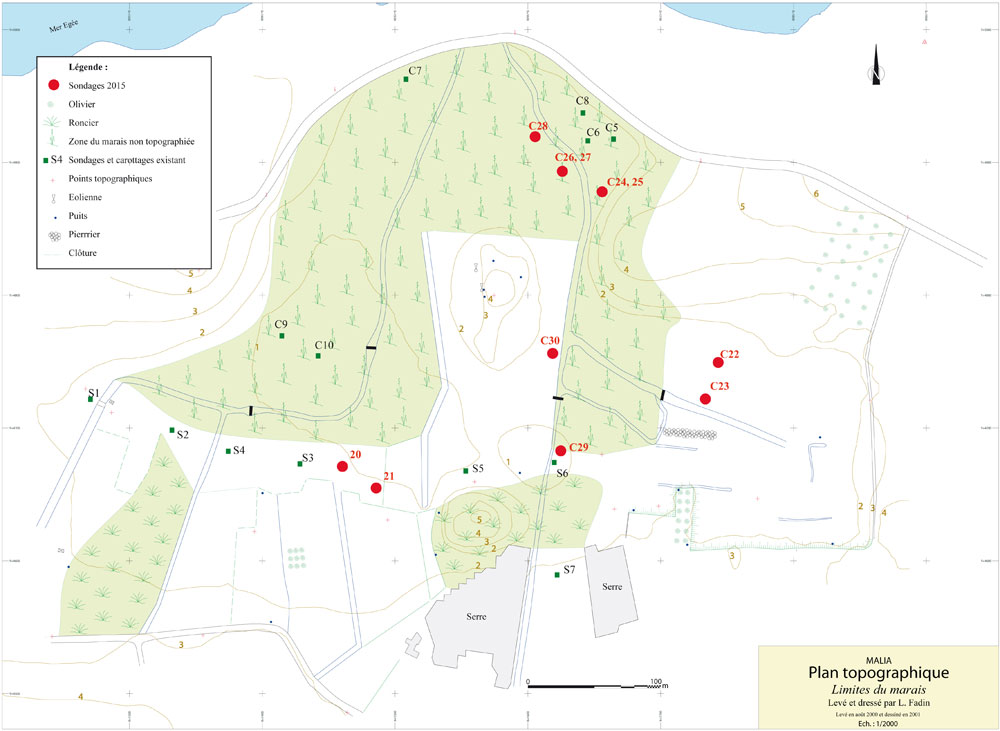Research into the paleogeographical evolution of Malia's plain began again in 2015, with new studies in the marsh bordering the site of the Minoan city: 11 sediment cores were taken (from a depth of 4 to 8 metres) under the guidance of Laurent Lespez (UPEC-UMR 8591 CNRS) and Maia Pomadère (Université Paris 1-ArScAn), with the collaboration of Jean-François Berger (CNRS-UMR 5600, Lyon) and Arthur Glais (Université de Caen).

Malia, topographical plan of the Marsh's outlines. Drawn up by L. Fadin © FSA
These cores are currently the subject of multi-parameter analyses and radiocarbon dating, which will enable researchers to determine how the marsh evolved from the Neolithic period until today.
These preliminary results still need to be refined and/or confirmed by the results of sedimentological, geochemical or pollen analyses currently in progress.
M. Pomadère © FSA
